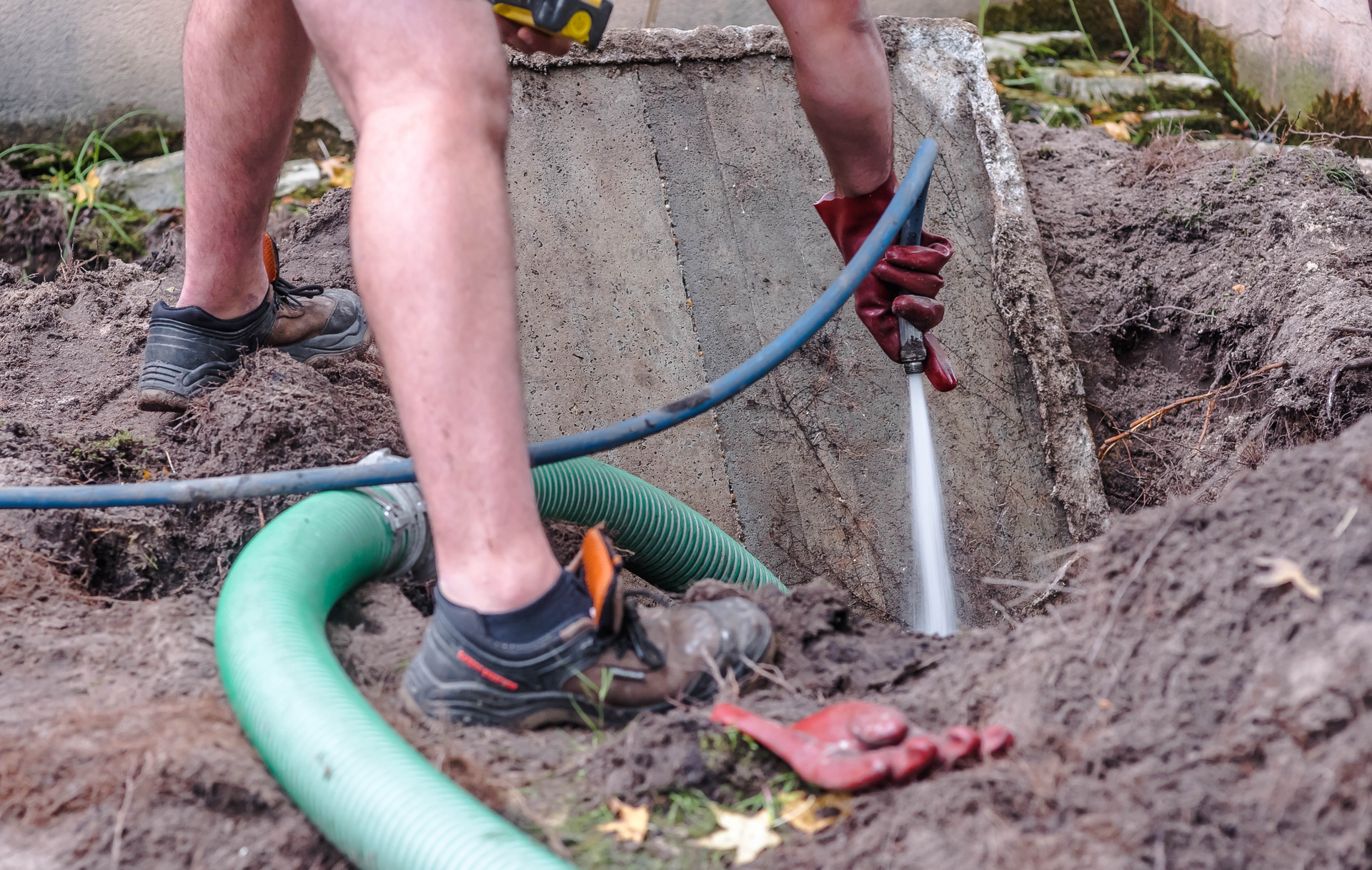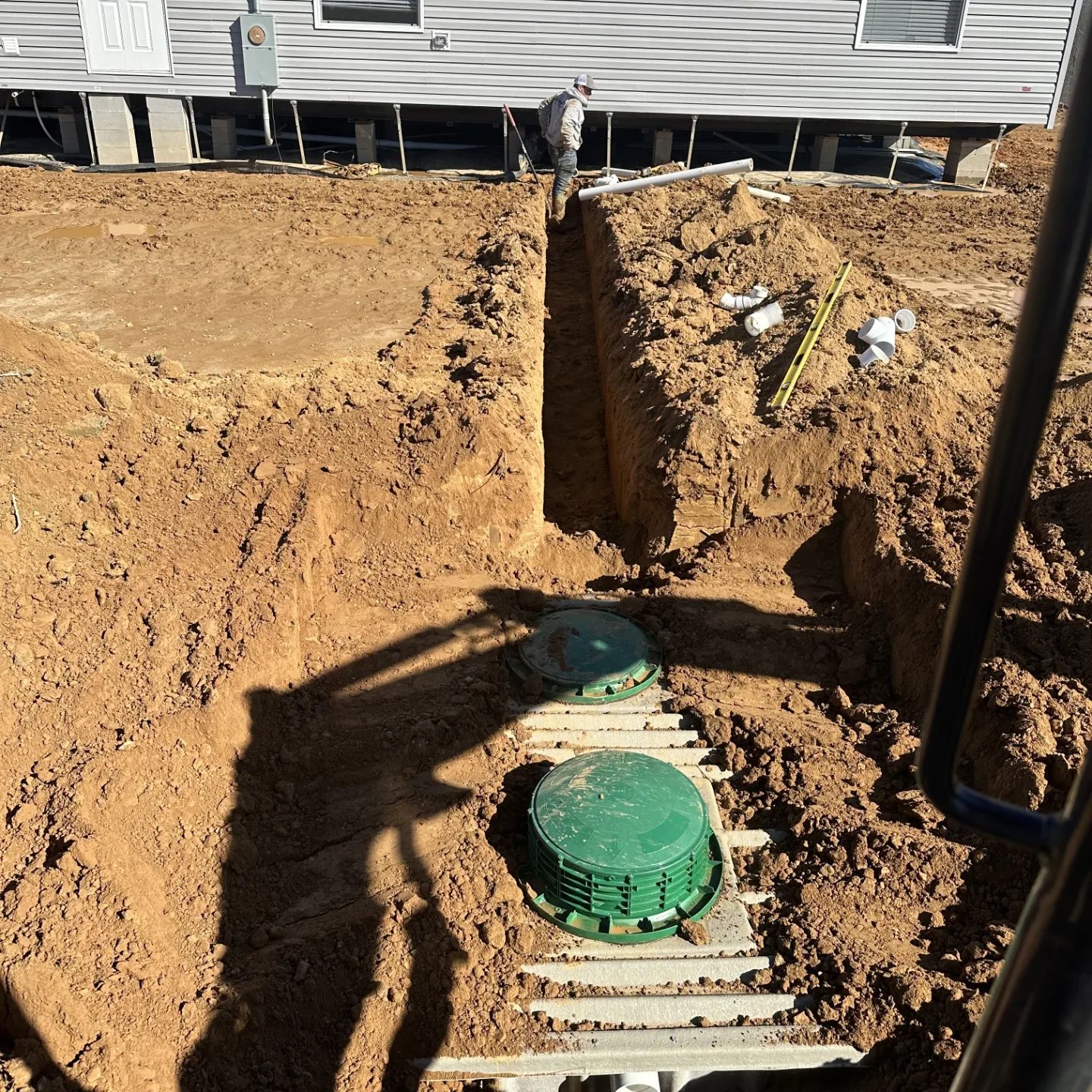Solving Common Septic System Issues: Troubleshooting Tips from Oxford Septic Services
January 8, 2025
Septic system issues can disrupt daily life and pose significant challenges for homeowners and businesses alike. From minor nuisances like slow drains to more serious problems like sewage backups, understanding how to troubleshoot common septic system issues is essential for maintaining a functional and efficient wastewater management system. In this guide, we'll explore troubleshooting tips from Oxford Septic Services to help property owners identify and resolve common septic system issues effectively.
Chapter 1: Identifying Signs of Septic System Problems
Overview of common signs and symptoms that indicate potential septic system issues, including foul odors, slow drainage, gurgling noises, soggy or saturated drain fields, and sewage backups
Explanation of the underlying causes of these symptoms, such as clogged pipes, tank overflows, drain field failure, tree root intrusion, and hydraulic overloading
Tips for homeowners and business owners on conducting visual inspections, monitoring water usage, and keeping records of septic system maintenance to detect early warning signs of trouble
Chapter 2: Diagnosing Septic System Problems
Step-by-step guide to diagnosing septic system problems based on observed symptoms and potential root causes, including conducting a thorough visual inspection of the septic tank, drain field, and plumbing fixtures
Introduction to diagnostic tools and techniques used by professional septic service providers like Oxford Septic Services, such as pressure testing, dye testing, and camera inspections, to pinpoint the source of septic system issues accurately
Case studies illustrating real-world examples of common septic system problems and the diagnostic process used to identify and resolve them effectively
Chapter 3: Troubleshooting and Remediation Strategies
Comprehensive overview of troubleshooting strategies and remediation techniques for addressing common septic system issues, including strategies for clearing clogged pipes, repairing damaged components, and restoring proper drainage
Guidance on when to attempt DIY repairs and when to seek professional assistance from experienced septic service providers like Oxford Septic Services, particularly for complex or hazardous problems
Best practices for implementing preventive maintenance measures to minimize the risk of future septic system issues, such as regular pumping, drain line jetting, and root barrier installation
Chapter 4: Tips for Preventing Future Problems
Discussion of proactive measures property owners can take to prevent common septic system issues and extend the lifespan of their systems, including proper waste disposal practices, water conservation measures, and landscaping precautions
Recommendations for developing and implementing a comprehensive septic system maintenance plan, including routine inspections, scheduled pumping, and ongoing monitoring of system performance
Conclusion:
Solving common septic system issues requires a combination of knowledge, observation, and proactive maintenance. By understanding the signs of septic system problems, diagnosing issues accurately, and implementing effective troubleshooting and remediation strategies, property owners can keep their septic systems running smoothly and avoid costly repairs. Contact Oxford Septic Services today for expert assistance in troubleshooting and resolving septic system issues.

Septic tank pumping is a crucial aspect of septic system maintenance that often goes overlooked by property owners. Regular pumping helps prevent costly repairs, prolongs the lifespan of the septic system, and protects the environment from contamination. In this guide, Oxford Septic Services shares valuable insights into the importance of routine septic tank pumping and its many benefits. Chapter 1: Understanding the Role of Septic Tank Pumping Overview of the septic tank pumping process and its significance in maintaining a healthy septic system Explanation of how septic tank pumping removes accumulated solids and sludge from the tank, preventing clogs and backups Chapter 2: Preventing Costly Repairs and System Failures Discussion of the potential consequences of neglecting septic tank pumping, including system backups, drain field damage, and groundwater contamination Exploration of the financial implications of septic system repairs and replacements compared to the relatively low cost of routine pumping Chapter 3: Extending the Lifespan of Your Septic System Explanation of how regular septic tank pumping helps prolong the lifespan of the septic system by reducing stress on system components and preventing premature failure Discussion of the correlation between routine pumping and the overall health and longevity of the septic system Chapter 4: Protecting the Environment and Public Health Examination of the environmental and public health risks associated with untreated wastewater discharge from poorly maintained septic systems Explanation of how routine septic tank pumping helps mitigate these risks by preventing groundwater contamination and protecting local water sources Chapter 5: Maintaining Property Value and Resale Potential Exploration of the impact of a well-maintained septic system on property value and resale potential Discussion of how routine septic tank pumping demonstrates responsible property ownership and can increase buyer confidence during real estate transactions Chapter 6: Ensuring Regulatory Compliance Overview of local regulations and requirements regarding septic system maintenance and pumping frequency Explanation of how routine septic tank pumping helps property owners remain in compliance with regulatory standards and avoid potential fines or penalties Chapter 7: Best Practices for Scheduling Septic Tank Pumping Recommendations for establishing a regular pumping schedule based on factors such as household size, water usage, and septic system capacity Tips for working with professional septic service providers like Oxford Septic Services to schedule timely and efficient pumping services Conclusion: Routine septic tank pumping is an essential aspect of responsible septic system ownership, offering numerous benefits for property owners, the environment, and public health. By understanding the importance of routine pumping and working with trusted professionals like Oxford Septic Services, property owners can ensure the long-term performance and reliability of their septic systems.

Installing a septic system is a critical step in ensuring proper wastewater management for residential and commercial properties. However, the installation process can be complex and requires careful planning and execution. In this comprehensive guide, Oxford Septic Services provides essential information and expert tips for homeowners and property owners considering septic system installation. Chapter 1: Understanding the Basics of Septic Systems Overview of septic systems and their components, including the septic tank, drain field, and distribution box Explanation of how septic systems function to treat and dispose of wastewater on-site, without access to a municipal sewer system Chapter 2: Assessing Site Conditions and Permitting Requirements Guidance on assessing soil conditions, topography, and site suitability for septic system installation Explanation of the permitting process and regulatory requirements for septic system installation, including obtaining necessary permits and approvals from local authorities Chapter 3: Designing the Septic System Overview of the steps involved in designing a septic system, including determining system size, layout, and location Discussion of factors to consider when designing a septic system, such as property size, soil type, and groundwater levels Chapter 4: Selecting and Installing Septic System Components Explanation of the different types of septic tanks, drain fields, distribution boxes, and other system components available for installation Step-by-step instructions for properly installing septic system components, including excavation, tank placement, piping installation, and backfilling Chapter 5: Ensuring Proper System Ventilation and Plumbing Connections Importance of providing adequate ventilation for the septic system to prevent the buildup of harmful gases, such as methane and hydrogen sulfide Guidelines for properly connecting plumbing fixtures, such as toilets, sinks, and showers, to the septic system to ensure efficient wastewater flow Chapter 6: Conducting Final Inspections and Testing Overview of the final inspection and testing process to ensure that the septic system meets all regulatory requirements and functions properly Explanation of common tests conducted during the final inspection, such as hydraulic load testing, dye testing, and soil percolation testing Chapter 7: Maintaining and Caring for Your New Septic System Recommendations for ongoing maintenance and care of the newly installed septic system, including routine pumping, inspection, and monitoring Tips for avoiding common pitfalls and ensuring the long-term reliability and performance of the septic system Conclusion: By following the guidelines and expert tips provided in this guide, property owners can navigate the septic system installation process with confidence. With careful planning, proper design, and professional installation by Oxford Septic Services, property owners can ensure the reliable operation and longevity of their septic systems for years to come.
